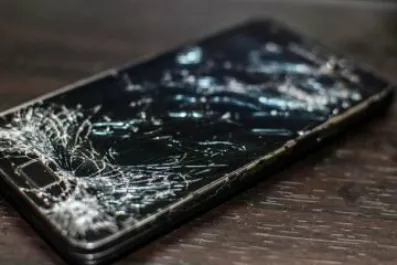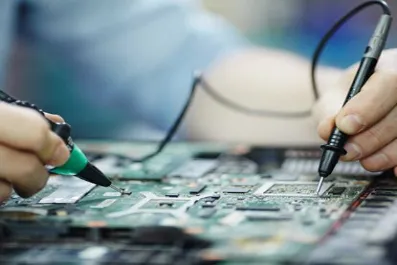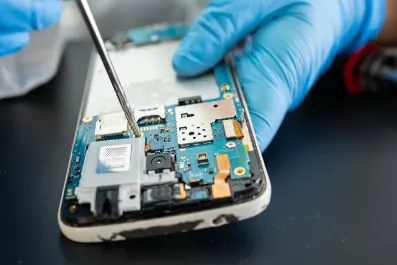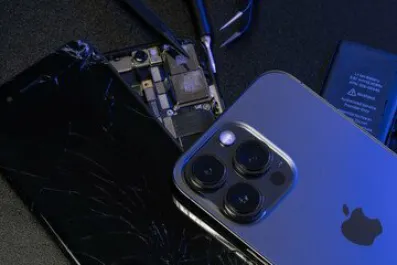Have you ever experienced that heart-stopping moment when your phone slips out of your hand and into the water? In our technology-driven world, smartphones are our lifelines, containing our most crucial information and connections. From precious family photos to important business contacts, our phones hold bits and pieces of our daily lives. Unfortunately, phone water damage is a common yet distressing occurrence. It can disrupt your day, cause data loss, and lead to expensive repair or replacement costs. Here’s what you can do to increase the odds of reviving your water-afflicted device and potentially save yourself from the stress of a damaged phone.
Immediate Steps: First Aid for Your Drenched Device
Don’t Panic – Act Fast!
The first seconds after your phone takes a plunge are critical. It’s imperative to retrieve your device as quickly as possible. Turn off your device immediately to prevent short circuits, the main culprits behind permanent phone damage. Remove the case and any peripherals like earphones or chargers. If your phone has a removable battery, take it out if you can do so quickly and safely. This can further reduce the risk of a short circuit and potential damage to the power source.
Remove Excess Water
Dab your phone with a soft cloth or towel to remove surface water. Be thorough yet gentle—check the ports and spaces around the buttons, and use cotton swabs to absorb water from crevices. Resist the temptation to shake it, which can drive moisture deeper into the phone’s crevices. If possible, keep the phone upright to prevent water from flowing into sensitive internal components. Removing excess water promptly can make a significant difference in preventing further penetration of moisture.
Troubleshooting Techniques: Dealing with Smartphone Water Damage
Do Not Use Heat
Avoid the urge to use a hairdryer or place your phone on a radiator. Excessive heat can warp components and seal in the moisture, which might result in irreparable damage to the delicate internal circuitry. The goal is to dry your phone without causing additional harm, so steer clear of direct heat sources, including ovens and direct sunlight, which can damage the screen and battery.
Silica Gel Packs
If you have them, silica gel packs can be a godsend. They are more effective at absorbing moisture than rice and can significantly reduce the internal humidity of your device. Place your phone in a container filled with silica gel packets, ensuring they cover and surround the device. This desiccant can draw out moisture effectively without the mess associated with other drying agents.
Leave It to Dry
Place your phone in a dry, warm place with good airflow. A fan can help circulate air around the device, promoting faster drying without the risks associated with using heat. This step requires patience; leave it for at least 24-48 hours. Position your phone against something so that any internal moisture can trickle downwards, away from important internal components.
How to Save a Water-Soaked Phone?
Check for Indicators
After giving your phone ample time to dry, check for indicators of phone water damage. Many phones have a small indicator in the SIM card slot that turns pink or red when exposed to moisture. This can give you a hint about the extent of the water penetration and can be a useful piece of information if you later seek professional repair services.
Test Responsiveness
Once it’s dry, turn it on and test its responsiveness. If it doesn’t turn on, try charging it with a different cable and charger before writing it off. Sometimes, the charging components are affected by water damage, and using new accessories can help you ascertain if there’s an issue with the battery or the phone itself. If the phone turns on but behaves erratically, it may be worth trying a factory reset after backing up your data, as some issues could be software-related.
Preventive Measures: Safeguarding Against Future Accidents
Waterproof Cases
Investing in a good waterproof case can provide invaluable protection and peace of mind for the future. These cases are specifically designed to withstand immersion in water, allowing you to take your phone to places you wouldn’t normally dare, like the beach or poolside. Additionally, waterproof cases often offer extra protection against drops and scratches, making them a smart investment for not just water accidents but everyday durability.
Regular Backups
Regularly backing up your data ensures that even if your phone succumbs to water damage, your information remains safe. Utilize cloud services or an external hard drive for these backups, and consider setting your phone to automatically backup at regular intervals. This ensures that, in the case of any damage, the latest data from your device will be retrievable, from contacts to precious memories captured in photos and videos.
Professional Help: When DIY Isn’t Enough
Expertise Matters
For phones that are severely water-damaged or unresponsive, professional assistance might be the only option. Specialists have the tools and expertise to diagnose and treat phone water damage. They can open your device correctly without causing further damage and use specialized tools to dry out and repair any components that have been affected. Moreover, professionals can offer you advice and services that can prolong the life of your phone post-recovery, ensuring you get the most out of your device.
Warranty and Insurance
Check if your phone’s warranty covers water damage. Alternatively, some insurance policies cover such accidents, potentially saving you from high repair costs. It’s also wise to be familiar with the terms and conditions of your warranty and insurance policy before an accident occurs. Knowing what’s covered and what’s not can help you make informed decisions about phone repairs and replacements. If your phone is not insured, consider purchasing insurance for the future, especially if you lead an active lifestyle where your phone is frequently exposed to the elements.
Final Words: Campus Phone Repair to the Rescue
If your DIY efforts at fixing a wet mobile device don’t pan out, it’s not the end of the road. Campus Phone Repair specializes in cell phone repair in Gainesville and can offer expert services to restore your phone to working condition. Remember, dealing with smartphone water damage can be tricky, and sometimes, the expertise of a professional can make all the difference between a phone that’s revived and one that’s beyond repair.
In conclusion, a drop in the water need not be a death sentence for your phone. With swift action, proper techniques, and sometimes a little help from professionals like Campus Phone Repair, your digital companion can survive to text another day. Remember, the sooner you act, the better the chances of saving your soaked smartphone.





